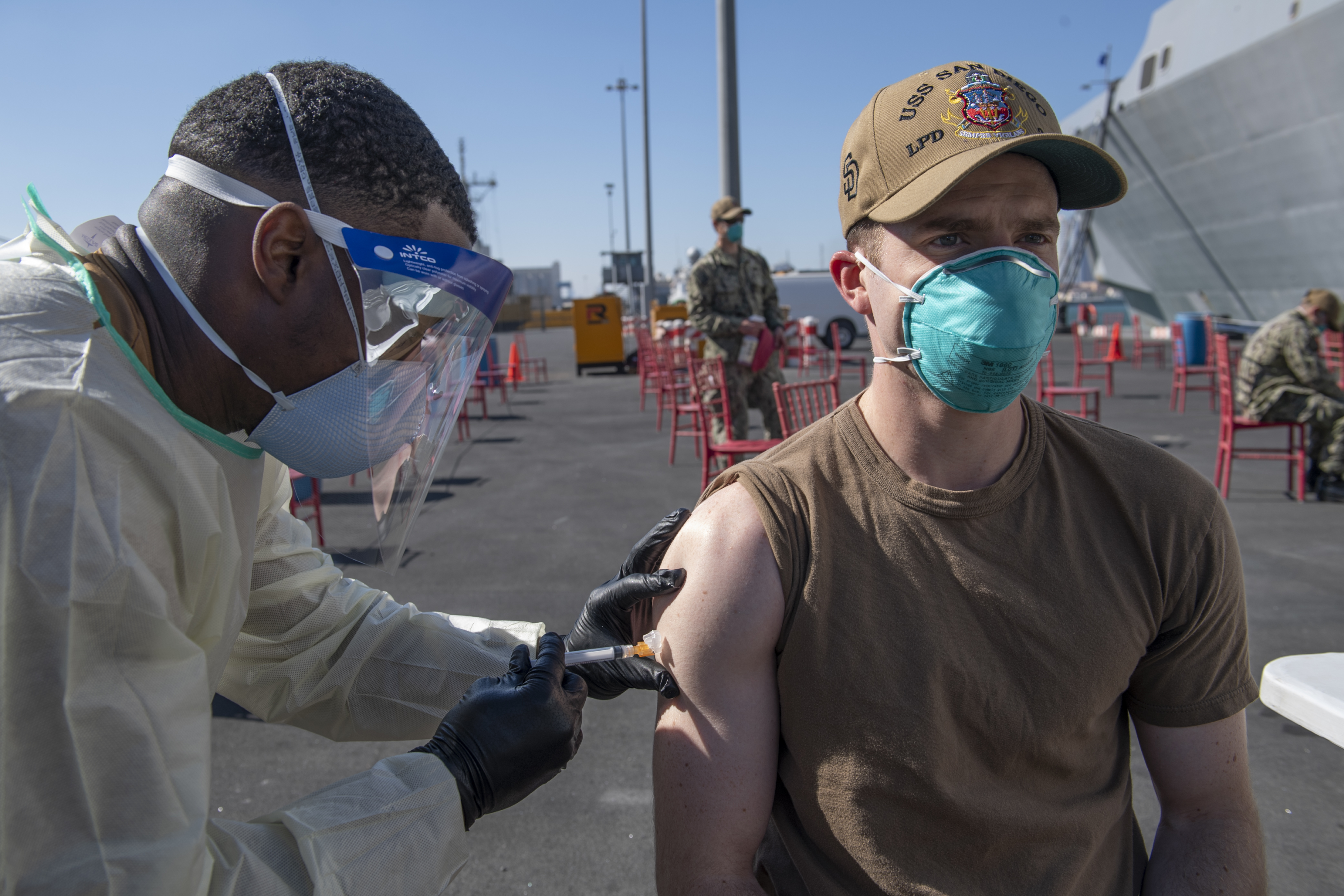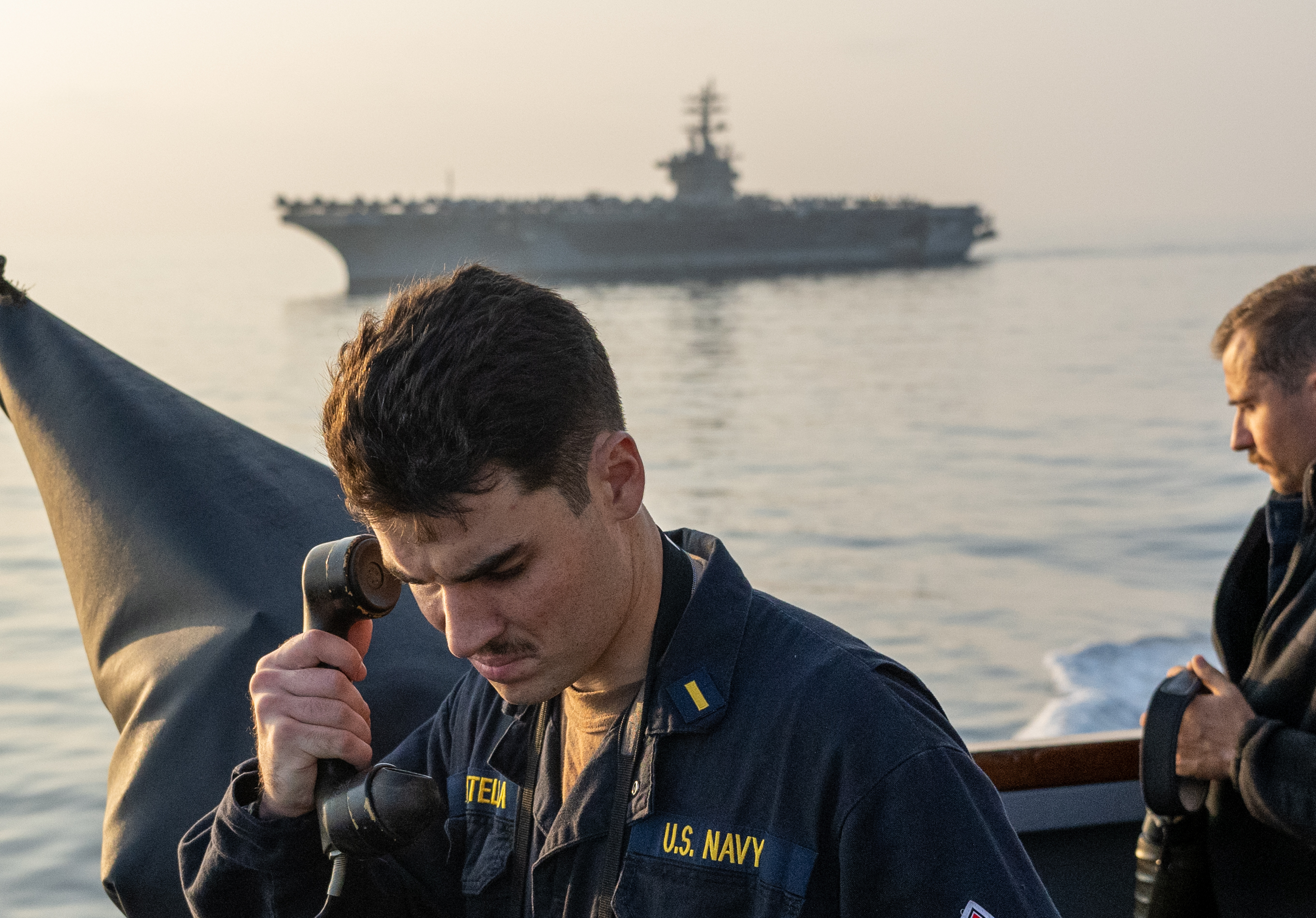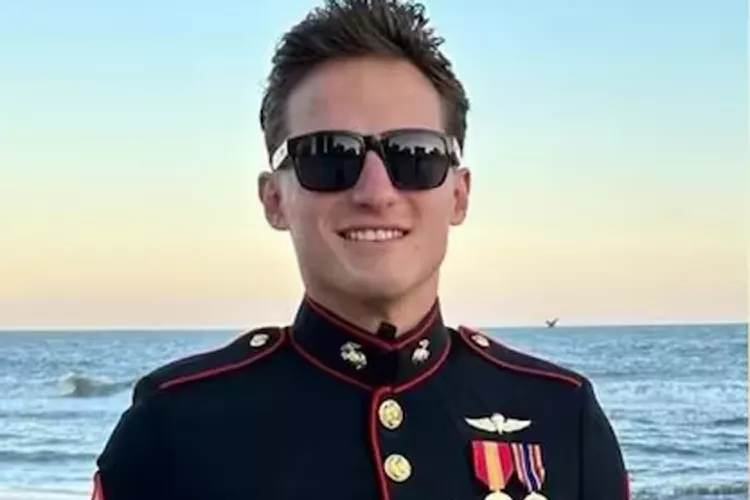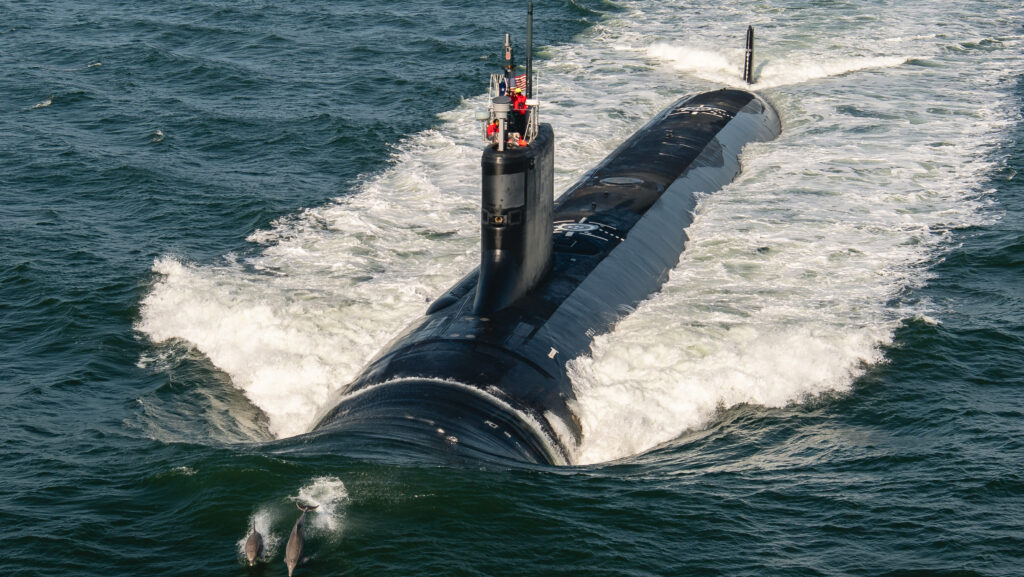
About three months into distribution, a little less than half of active-duty sailors have received at least the initial dose of one of two COVID-19 vaccines, according to Navy data provided to USNI News on Wednesday.
As of Wednesday morning, 157,982 sailors have been given at least one of the Moderna or Pfizer-BioNTech vaccines with about two-thirds of those sailors receiving the full two doses, USNI News has learned. The Navy’s current end-strength is about 347,445 as of Jan. 31. As of Saturday, the one-shot Johnson & Johnson vaccine was given emergency use authorization. The bulk of the vaccines have been directed toward forces deployed or preparing to deploy.
What’s unclear publicly are the number of sailors that are declining to accept the vaccines. The service provided an estimated percentage to USNI News in late January – about 70 percent of those offered the shot accepted – but declined to provide an updated total citing lack of data.
“The Navy has not historically collected declination rates for previous vaccinations and have only recently revised our systems to record such data,” the Navy said in a statement to USNI News.
“It will likely be several months before we have usable data that accurately reflects the declination rate, the cause of the declinations, and the impact on operations. In the interim, we are encouraging all personnel to take the vaccine as soon as they are able in order to limit any impact on readiness of the fleet. We are focused on getting people vaccinated.”
Because all the vaccines are approved for use under an emergency FDA authorization, the Defense Department can’t make taking the vaccines mandatory. Being unable to force the shots, the services have mounted a campaign to encourage taking the vaccine and dispel myths.
Every service member considered for the vaccine is presented a document that asks if they would like to be screened for the vaccine or decline to be screened, USNI News understands. The data is collected from the DHA 207 forms, created in December, at the unit level and is passed up to the service level, two defense officials familiar with the process told USNI News.
While the units and their parent services have assembled their own understanding of who say no to the shot, senior Pentagon officials have repeatedly said that the Defense Department does not aggregate the declination rate across the services.
“What we are doing is keeping track of acceptance rates, those who are agreeing to take the vaccines, but we don’t have a system in place across each of the services to specifically track data with respect to those individuals who for whatever reason are declining or deferring the vaccine,” Pentagon spokesman John Kirby said on Feb. 17, according to a transcript provided to USNI News by a DoD spokesperson on Tuesday when asked about Defense Department-wide declination rates.
The closest the Defense Department has said to a global number was about a third of service members who have been offered the vaccine turning it down, USNI News reported last month.
While there are no specific numbers on hand for why people say no, anecdotally the reasons range from fear of the vaccine to some service members not wanting to give up their new work from home options, according to several defense officials.
The equation could change if one or all the drugs reach full FDA approval, providing the Pentagon the authority to require troops be vaccinated.
“Obviously, we’re thinking about what happens when they become FDA-approved,” Kirby said, reported Military.com. “It would change the character of the decision-making process, about whether they could be mandatory or voluntary. But I don’t want to get ahead of that process right now.”





